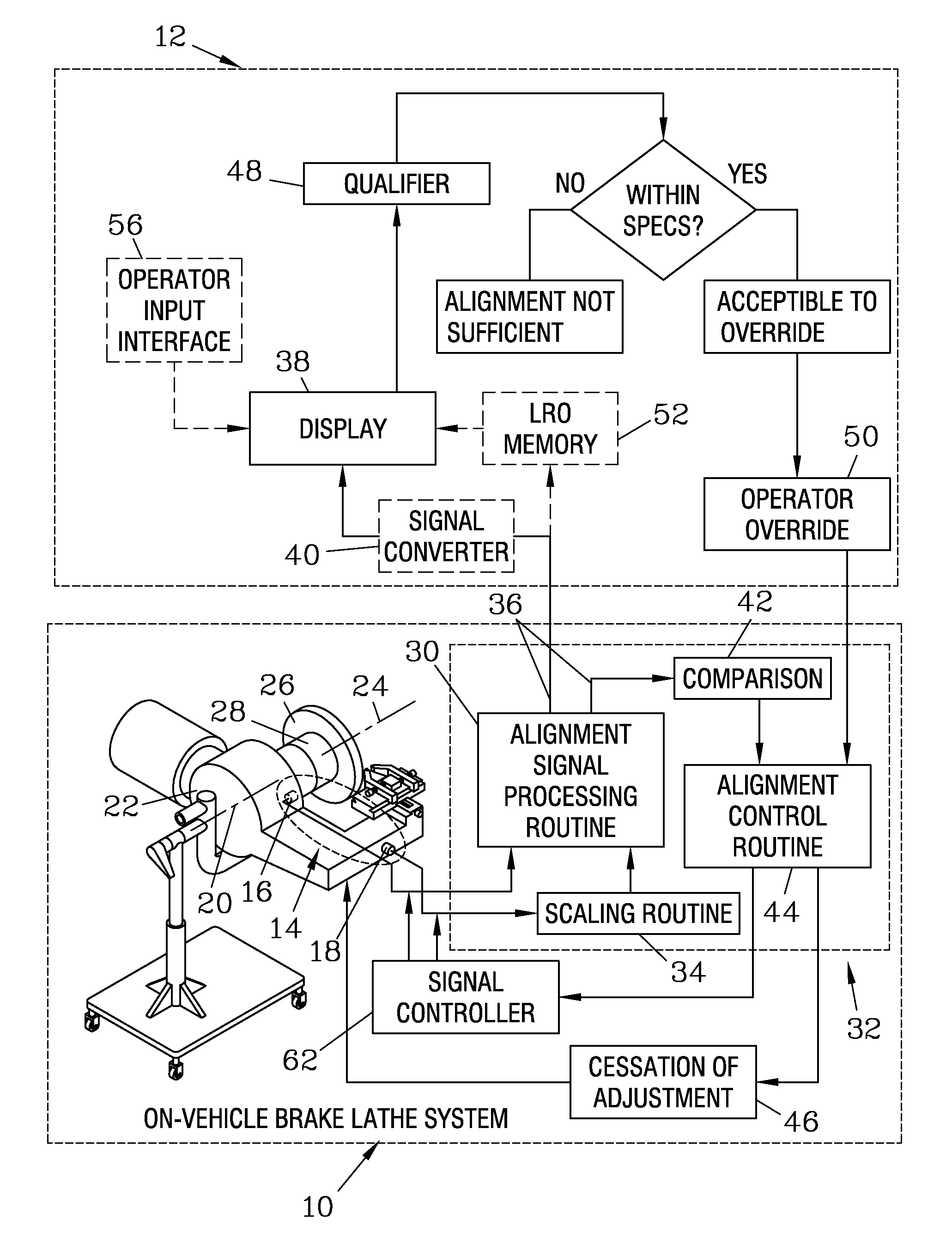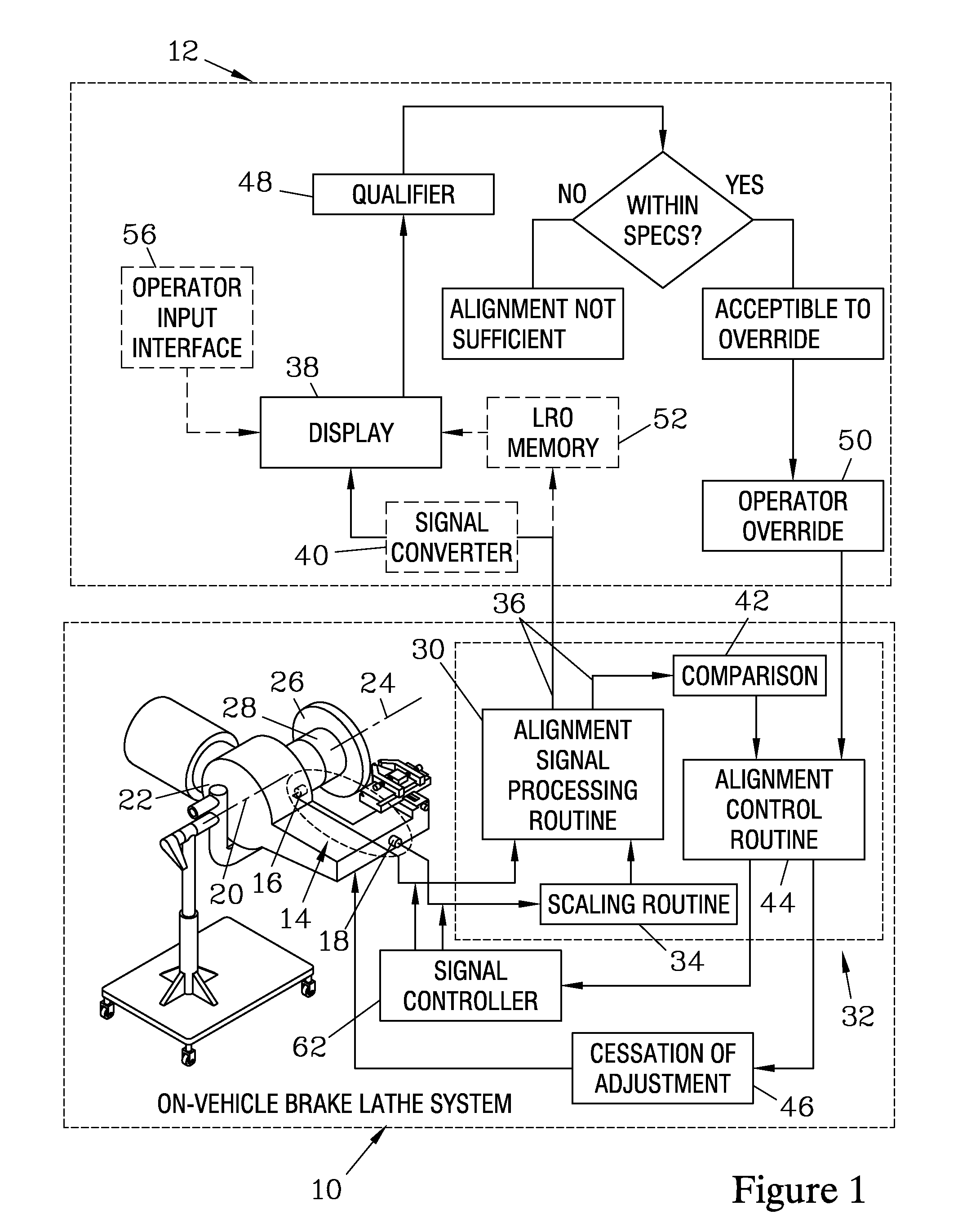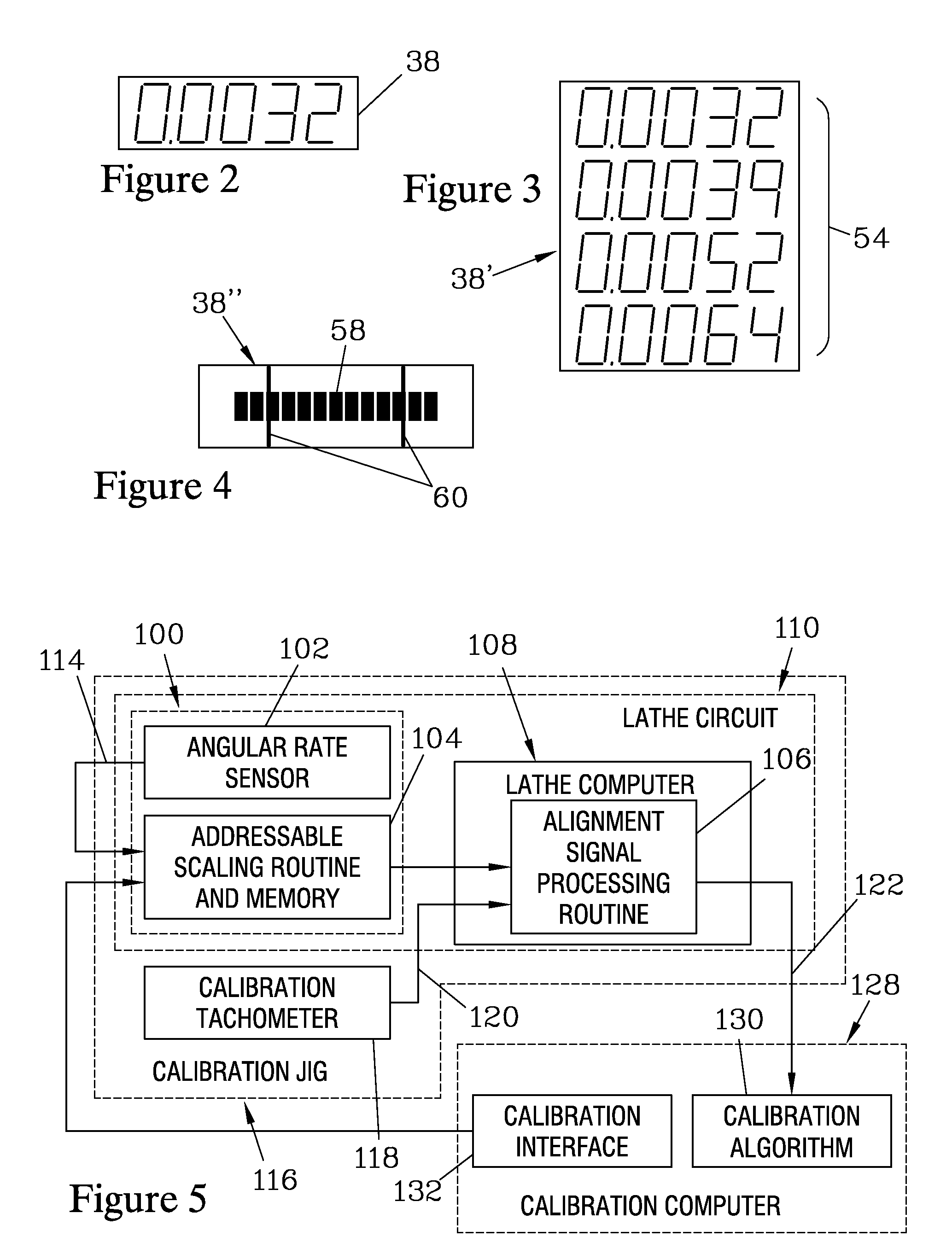Dynamic alignment monitoring system for on-vehicle disk brake lathe
a technology of dynamic alignment monitoring and brake lathe, which is applied in the direction of portable lathes, manufacturing tools, auxiliaries, etc., can solve the problems of angular rate sensor failure, time-consuming alignment process, and operator error,
- Summary
- Abstract
- Description
- Claims
- Application Information
AI Technical Summary
Benefits of technology
Problems solved by technology
Method used
Image
Examples
Embodiment Construction
[0029]FIG. 1 is a schematic representation of an on-vehicle disk brake lathe system 10 with a dynamic alignment monitoring and operator intervention system 12 which forms one embodiment of the present invention. The on-vehicle brake lathe system 10 has alignment sensors 14 which include a tachometer 16 and an angular rate sensor 18. The angular rate sensor 18 needs to have a high degree of repeatability and calibrated output so as to provide sufficient sensitivity to be responsive on a real time basis and allow an accurate time-dependant tracking signal which provides signals, as a function of time, that result from the misalignment between a lathe axis 20 of an on-vehicle disk brake lathe 22 and a disk axis 24, which is the axis of rotation of a brake disk 26 and a wheel hub 28 to which the lathe 22 is attached. Angular rate sensors having sufficient sensitivity are referred to hereafter as high resolution angular rate sensors.
[0030]When the angular rate sensor 18 is selected to be...
PUM
| Property | Measurement | Unit |
|---|---|---|
| radius | aaaaa | aaaaa |
| speed | aaaaa | aaaaa |
| axis of rotation | aaaaa | aaaaa |
Abstract
Description
Claims
Application Information
 Login to View More
Login to View More - R&D
- Intellectual Property
- Life Sciences
- Materials
- Tech Scout
- Unparalleled Data Quality
- Higher Quality Content
- 60% Fewer Hallucinations
Browse by: Latest US Patents, China's latest patents, Technical Efficacy Thesaurus, Application Domain, Technology Topic, Popular Technical Reports.
© 2025 PatSnap. All rights reserved.Legal|Privacy policy|Modern Slavery Act Transparency Statement|Sitemap|About US| Contact US: help@patsnap.com



